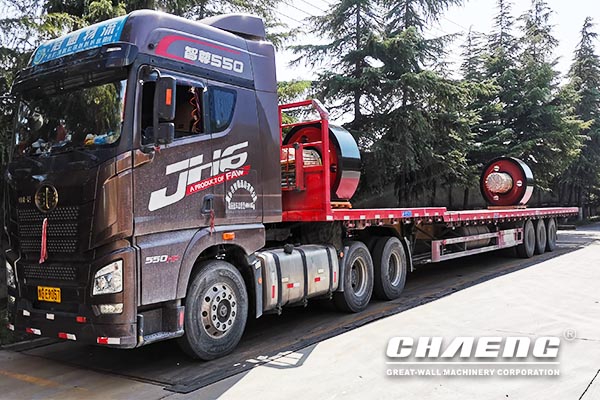Industry Reports
Rotary kiln supporting roller replacement plan

Support roller replacement process
1. Prepare the maintenance plan, master the key dimensions and accuracy requirements, and make technical preparations; transport auxiliary tools to the maintenance site and prepare the tools;
2. Clean up the debris on site, find out the centerline of the rotary kiln and the supporting wheel, and mark the base of the supporting wheel and the foundation plate;
3. After the rotary kiln has cooled down, place the jack steadily in the lower middle of the wheel belt, place a wooden board on top of the jack to prevent it from slipping, and tighten the jack at the same time;
4. Remove the heat insulation board, roller tile cover, oil scoop, circulating water pipe, etc. of the supporting roller tile and place them somewhere out of the way;
5. Jack up the wheel belt so that it is about 10 mm away from the supporting wheel. Check whether the jack leaks or sinks. If so, troubleshoot first. If there is no sinking phenomenon, place steel plates between both sides of the jack cylinder and the wheel belt. Or tighten the square iron to prevent leakage and tire sinking, and perform a pressure relief inspection on the jack;
6. Make a mark around the base of the supporting wheel, loosen the anchor bolts of the supporting wheel base to be replaced, use an inverted chain or a jack to push the supporting wheel to a position convenient for lifting, hang a wire rope on the supporting wheel, and lift the supporting wheel away. on site;
7. Clean the supporting wheel, measure the supporting wheel, shaft head diameter and wear amount; clean the supporting wheel tile and determine whether it is still used. If not, remove it. If a new supporting wheel tile needs to be replaced, the relevant dimensional inspection should be carried out;
8. Clean the foreign oil stains on the new roller, measure the size, and open the tile opening according to the inspection results to ensure that the gap on the side of the tile opening is about two thousandths of the shaft diameter, and the oil guide wedge groove is too natural; grind the tiles against the shaft, Make the wrapping angle at about 60 degrees, contact the scar, and achieve a distance of no more than 3 mm between the left and right. The thrust plate is tightly combined and the scar is even;
9. Grind the tiles and tile tires against each other so that the distance between the left and right scars is less than 5 mm. Then fix it on the tire;
10. Calculate the position of the new supporting wheel based on the measured size of the supporting wheel, and draw the position of the tile seat after replacement to ensure that the stress state of the supporting wheel remains basically unchanged compared to the old supporting wheel; lift the new supporting wheel and place it on the tile and align it Right, then remove the sling;
11. Use an inverted chain or a jack with the jacking screw to position and align the tile seat, and recheck the coincidence with the new position. If there is no problem, tighten the anchor bolts and tighten the jacking screw;
12. Lift the wheel belt a little, remove the square iron, and slowly place the wheel belt on the supporting wheel; clean the shaft and tiles, install the oil spoon, connect the circulating water, and conduct experiments. If there is no water leakage, fasten the tile cover; Add lubricating oil and install the heat shield;
13. In slow-rotating rotary kiln, check and judge the contact between thrust plate, tile and shaft according to the oil film condition. Check whether the oil scoop interferes with the situation, the gap between the thrust plate and the tile skirt, etc.; check and accept that it is normal, pack up the tools, clean the site, and the replacement of the supporting wheel is completed.



